A Museum of Geography, What?

On October 21, 2016, the Los Angeles Museum of Geography opened its first exhibition, “The Homeless Amongst Us,” in its temporary home at 2426 SET in the West Adams district of L.A. The exhibit, designed by John May and Zeina Koreitem of Millions Architecture, consists of three videotaped interviews with formerly homeless people projected onto the sides of levitating tents and a slide show of photographs of a homeless encampment, all of it undergirded by a haunting synthesizer score composed by former Mothers of Invention keyboard player, Don Preston. The exhibition intends to provoke discussion and incite thought about the condition of the homeless in this city.
That’s all very fine and good, and perhaps even noble and praiseworthy, but what is this about a museum of geography? Who ever heard of such a thing? What could it consist of? What possible void does it fill?
First, as we all know, there is no geography without history and no history without geography. This means that every museum of history that has ever graced the Earth, from the most venerable to the most humble, is also a geography museum. Otherwise, none of that history would have a place to take place in. So, by the route of default, there have been scores of geography museums without the benefit of naming rights. Next, as geography, in its broadest sense, is the study of that which is on the Earth, there is certainly plenty of allowance for bestowing upon the discipline the privilege of having its own museums. Certainly the possible subject matters are exceedingly ample, from the changing demographics of the urban mileau to the current state of global warming to economic change in Southeast Asia to the inevitable environmental and economic degradations of neoliberalism.
In Los Angeles, there are two specific reasons for opening a museum of geography. First, there is no history museum here. Though the snide may claim that’s because there is no history in the City of the Angels, I would suggest they dig a little deeper into the archive and study the record. Though this is a relatively young city, its history is rich and deeply textured. The very layout of the city reflects this, with the downtown core based on the Plan of the Indies, imposed by the Spanish during their rule, and the remainder of the city based on the Jeffersonian grid, imposed after the “Americans” took power. Still, despite this, there is no history museum, which leaves a yawning gap in the cultural landscape of the city, as most cities and many towns do have historical museums. So there is a void here that needs to be filled.
Secondly, Los Angeles, being a center of innovation and a hub of all that is new, novel, and even kooky, is the perfect city in the world to have its own geography museum. L.A. has been the birthplace, among others, of the Self Realization Fellowship and the Ham and Eggs movement, as well as the more infamous Church of Scientology and the International Church of the FourSquare Gospel, so why not a museum of geography? We also have a museum dedicated to Jurassic technology and a Death Museum, as well as the more famous but just as singular CityWalk and Knott’s Berry Farm: the region being a site of many wonders, one more wonder won’t seem all that weird.
Yet the Los Angeles Museum of Geography isn’t dedicated to the furtherance of kookiness. Its ambit is large, its range vast, its intentions serious. Though we debuted with an exhibit on the homeless and have another coming up on gentrification, certainly a pressing topic in this city, we are not confining ourselves to issue-oriented exhibitions. Our next show, for instance, will focus on everyday Los Angeles and will consist of a collection of ephemera reflecting the quotidian reality of the city. Bus passes and grocery store receipts will be featured as well as a selection of paintings and photographs reflecting the everyday nature of L.A. In the future, we will mount exhibitions detailing the various diasporas of ethnic groups and races who ended up planting their roots in Los Angeles, from Koreans to Mexicans to African-Americans to Iranians to Thais to Armenians. L.A. is a polyglot city, with more than 125 languages spoken by the students of Hollywood High School and a stunning array of ethnic and racial enclaves including a Thai Town, a Little Tokyo, a Koreatown, a Little Cambodia, a Chinatown, a Little Armenia, a Tehranangeles, a Little Bangladesh, a Little Ethiopia, and a Historic Filipinotown, not to mention the Crenshaw District, one of the largest African-American urban neighborhoods in the United States, and East L.A. and Boyle Heights, two of the largest concentrations of Mexican-Americans in the country. A series of exhibits will highlight these and other populations who have settled here.
However, we won’t ignore physical geography. The museum will host a show on earthquakes, certainly a topical subject in Los Angeles, and another on the subject of water in Los Angeles, an issue fraught with drama in this region, as anyone who has ever seen the film Chinatown will testify to. We will also focus on the economic geography of the region, with exhibitions on the motion picture business (AKA The Industry) and another on the former glory days of L.A.’s industrial past, when steel plants and car factories dotted the landscape of Southeast Los Angeles.
The museum also hopes to be an educational resource center for the community, offering free cultural geography and GIS courses to underserved K-12 students. It will also host conferences, colloquiums, and lectures about the geo-history of the region, and will present a series of films which use L.A. as its setting, from noir classic Double Indemnity to Oscar-winner Crash to academic favorite Blade Runner to the drama-documentary Exiles to cult film The Big Lebowski. A literary series featuring Los Angeles fiction will also be mounted, including tributes to If He Hollers Let Him Go by Chester Himes, Play It As It Lays by Joan Didion, and Inherent Vice by Thomas Pynchon, among others.
There is no reason why geography cannot take a central position in the cultural ambience of any big city. Pressing social issues are in our ambit, from the aforementioned homelessness and gentrification to economic dislocation and demographic transformations. There are anthropological museums, archeological museums, and of course history museums, not to mention sports museums, musical instrument museums and farm implement museums; I see no reason why there shouldn’t be geographical museums.
However, there is one obstacle and it may be an overwhelming one. It requires that geographers leave the academic grove, at least on a part-time basis, and engage with the wider community. This not only requires considerable time, often without immediate remuneration, but may also require a more generalized approach to the discipline, one that allows folks other than academics into the fold. A style is needed that is suited to a broad swath of the public, one that doesn’t dumb down complex ideas yet is accessible to all and sundry, from garage mechanics to nuclear physicists. A capacity to navigate through institutional terrain while simultaneously performing banal tasks, such as raising money and keeping to a budget, are also required. Many academics will throw up their hands at such a prospect: isn’t there enough bureaucratic balderdash in a typical geography department without ranging into the civic mileau and opening a damn museum?
That is a sentiment I readily understand, as I am facing many of these tedious mundane tasks as I launch the Los Angeles Museum of Geography. However, the opportunity of placing geography where it belongs – right in the center of things, in my estimation – is too tempting to bypass. So the next time you’re in L.A., look us up. Perhaps we’ll be exhibiting our upcoming show on the haunted geographies of L.A. or one on civic unrest in the city, certainly a subject writhing with promise, or the show on food in L.A. A geography museum does make sense as it can provide a wonderful avenue for geographers to present their ideas and research to an audience. May there be a thousand such museums in a thousand cities, from London to Dakar and Shanghai to Bogotá.
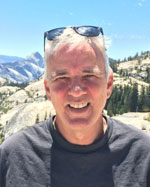
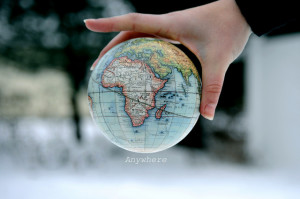 The AAG is participating in an international effort to design and develop a geography assessment based on the successful model used by the International Association for the Evaluation of Educational Achievement (IEA) for the Trends in International Mathematics and Science Study (TIMSS).
The AAG is participating in an international effort to design and develop a geography assessment based on the successful model used by the International Association for the Evaluation of Educational Achievement (IEA) for the Trends in International Mathematics and Science Study (TIMSS).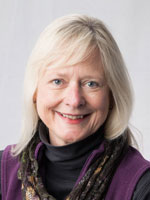 AAG Past President Sarah Witham Bednarz will explore the evolving role, nature, and relevance of geography education as viewed by former presidents of the AAG from 1910 to the present. AAG presidential addresses have, at times, commented directly on education issues; at other times the topic has been avoided, if not ignored.
AAG Past President Sarah Witham Bednarz will explore the evolving role, nature, and relevance of geography education as viewed by former presidents of the AAG from 1910 to the present. AAG presidential addresses have, at times, commented directly on education issues; at other times the topic has been avoided, if not ignored.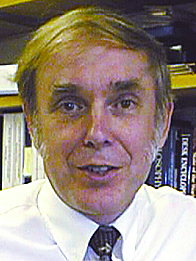

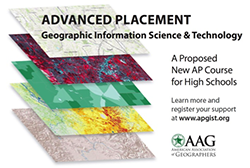
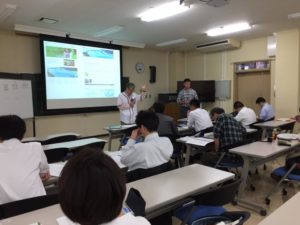 Since 2012 the AAG has been participating in an international effort, known as GeoCapabilities, to support new approaches in geography teacher education. As previously reported earlier this year, the GeoCapabilities project launched a new website that includes four training modules. Collectively, the modules are designed to promote a “curriculum of engagement” based on an appreciation of the significance of geographical knowledge in the education of young people.
Since 2012 the AAG has been participating in an international effort, known as GeoCapabilities, to support new approaches in geography teacher education. As previously reported earlier this year, the GeoCapabilities project launched a new website that includes four training modules. Collectively, the modules are designed to promote a “curriculum of engagement” based on an appreciation of the significance of geographical knowledge in the education of young people. AAG To Host Twitter Chat on Nov. 17
AAG To Host Twitter Chat on Nov. 17
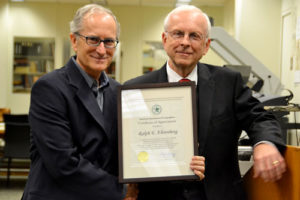 The AAG honored Ralph Ehrenberg, Chief of the Library of Congress Geography and Map Division, during his retirement from the Library of Congress on October 13, 2016. The AAG’s Executive Director Doug Richardson presented him with a certificate of appreciation for his many years of service to the Association as the first AAG Archivist and in his distinguished role at the Library of Congress.
The AAG honored Ralph Ehrenberg, Chief of the Library of Congress Geography and Map Division, during his retirement from the Library of Congress on October 13, 2016. The AAG’s Executive Director Doug Richardson presented him with a certificate of appreciation for his many years of service to the Association as the first AAG Archivist and in his distinguished role at the Library of Congress.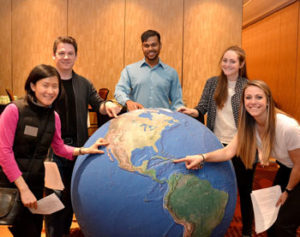 The AAG is currently seeking interns for the spring semester, although the organization offers opportunities on a year-round basis for the spring, summer and fall semesters. Interns participate in most AAG programs and projects such as education, outreach, research, website, publications, or the Annual Meeting. The AAG also arranges for interns to accompany different AAG staff on visits to related organizations or events of interest during the course of their internship.
The AAG is currently seeking interns for the spring semester, although the organization offers opportunities on a year-round basis for the spring, summer and fall semesters. Interns participate in most AAG programs and projects such as education, outreach, research, website, publications, or the Annual Meeting. The AAG also arranges for interns to accompany different AAG staff on visits to related organizations or events of interest during the course of their internship.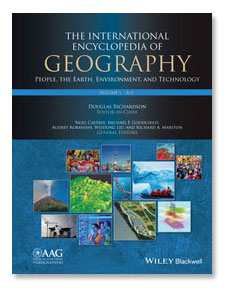 The AAG and an international team of distinguished editors and authors are in the final stages of preparing a new major reference work for Geography: The International Encyclopedia of Geography: People, the Earth, Environment, and Technology.
The AAG and an international team of distinguished editors and authors are in the final stages of preparing a new major reference work for Geography: The International Encyclopedia of Geography: People, the Earth, Environment, and Technology.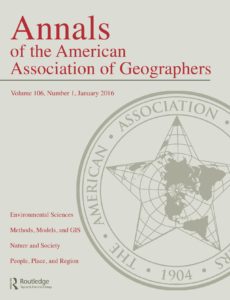 The AAG is pleased to announce that Volume 106, Issue 6 (November 2016) of the Annals of the American Association of Geographers is now available.
The AAG is pleased to announce that Volume 106, Issue 6 (November 2016) of the Annals of the American Association of Geographers is now available.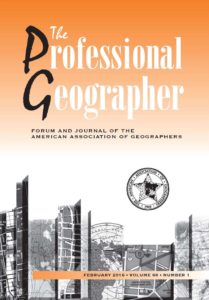 The AAG is pleased to announce that Volume 68, Issue 4 (November 2016) of The Professional Geographer is now available.
The AAG is pleased to announce that Volume 68, Issue 4 (November 2016) of The Professional Geographer is now available.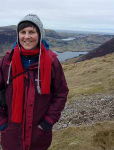 Sally Eden, professor of Human Geography at the University of Hull, UK, whose research explored issues of environmental perception, and sustainable food production and consumption, passed away in September 2016 after a period of illness.
Sally Eden, professor of Human Geography at the University of Hull, UK, whose research explored issues of environmental perception, and sustainable food production and consumption, passed away in September 2016 after a period of illness. Larry Hamilton, emeritus professor of natural resources at Cornell University, who played a leading role in the worldwide conservation of mountain areas, passed away on October 6, 2016, at the age of 91.
Larry Hamilton, emeritus professor of natural resources at Cornell University, who played a leading role in the worldwide conservation of mountain areas, passed away on October 6, 2016, at the age of 91.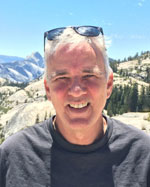 Let’s talks about Geographical Determinism. Got your attention? I thought so. The term, along with its cousin, Environmental Determinism, has long been disdained and pejorative amongst geographers, anthropologists and other disciplines. There is a rightful rejection of determinism’s racist connotations and applications in the 19th and early 20th centuries. There is also good cause to question explanations of complex societal attributes and histories that are based on selected geographic/environmental conditions alone. To even utter the terms Geographical Determinism here in the Newsletter of the American Association of Geographers, much less start a column this way, might well be considered a step into dangerous waters!
Let’s talks about Geographical Determinism. Got your attention? I thought so. The term, along with its cousin, Environmental Determinism, has long been disdained and pejorative amongst geographers, anthropologists and other disciplines. There is a rightful rejection of determinism’s racist connotations and applications in the 19th and early 20th centuries. There is also good cause to question explanations of complex societal attributes and histories that are based on selected geographic/environmental conditions alone. To even utter the terms Geographical Determinism here in the Newsletter of the American Association of Geographers, much less start a column this way, might well be considered a step into dangerous waters!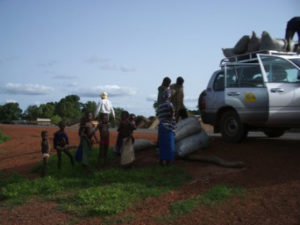
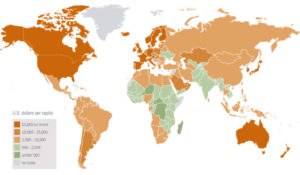
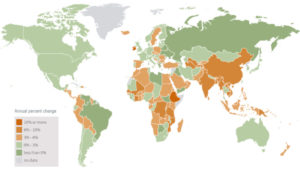
 The AAG receives numerous requests for data related to geography and geographers. Often such requests come from members who are doing research on the discipline, or who are interested in knowing, for example, the proportion of women who hold the rank of associate professor or the average value of a graduate student assistantship.
The AAG receives numerous requests for data related to geography and geographers. Often such requests come from members who are doing research on the discipline, or who are interested in knowing, for example, the proportion of women who hold the rank of associate professor or the average value of a graduate student assistantship.